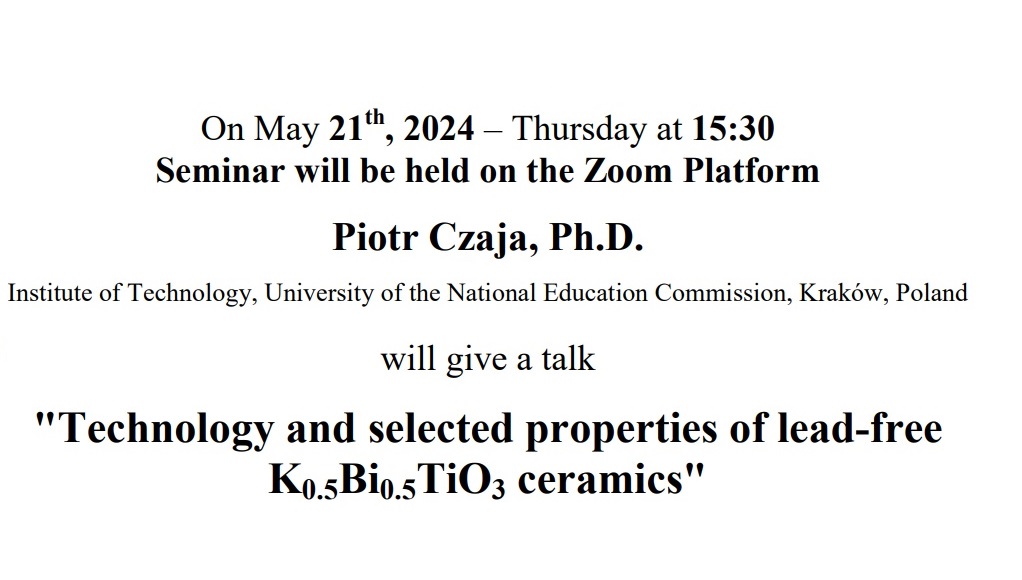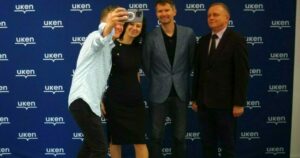SEMINAR OF THE INSTITUTE OF PHYSICAL SCIENCES OF CARDINAL STEFAN WYSZYŃSKI UNIVERSITY

On May 21th, 2024 – Thursday at 15:30
Seminar will be held on the Zoom Platform
Piotr Czaja, Ph.D.
Institute of Technology, University of the National Education Commission, Kraków, Poland
will give a talk
„Technology and selected properties of lead-free K0.5Bi0.5TiO3 ceramics”
Autors: P. Czaja, E. Szostak, J. Hetmańczyk, P. Zachariasz, D. Majda, J. Suchanicz, M. Karolus, D. Bochenek, K. Osińska, J. Jędryka, A. Kityk, and M. Piasecki
In this talk, I report the influence of the microstructureon the optical and dielectric properties of lead-free bismuth-titanate-potassium K0.5Bi0.5TiO3 (KBT) ceramics. KBT ceramics were synthesized with intentionally changed technology conditions. The studies of thermal stability and structural and electronic properties of the samples were carried out using SEM/EDS, XRD, DSC techniques, and FT-IR, Raman, and EIS spectroscopy methods. Quantum calculation based on the density functional theory (DFT) method, allowed us to connect a wide range of physical properties with experimental observables.
We demonstrated that the desired KBT dielectric properties can be easily modified with the relevant milling time and sintering. Notably, a meaningful increase in the parameter (almost twice) was noticed in the research. This parameter plays an important role in designing innovative ceramic materials for industrial applications. Undoubtedly, the lead-free K0.5Bi0.5TiO3 ceramics possesses excellent dielectric properties, especially when compared with the PbTiO3 and Na0.5Bi0.5TiO3 commercial materials.
The study revealed that obtained KBT material is characterized by substantial nonlinearoptical properties (NLO), and the second harmonic generation (SHG) intensity depends on the crystallite sizes. Interestingly, we found that SHG appears even at low fundamental beam energy. Therefore, it can be concluded that KBT ceramics generate a fairly intense SHG light corresponding to well-known NLO materials. Due to the stochastic arrangement of crystallites in polycrystalline KBT ceramics, synthesized samples exhibits a bright glow with a 532 nm wavelength, regardless of spatial orientation.
We warmly invite everyone interested,
Agata Kamińska, Ph.D., prof. of CSWU
Paweł Pęczkowski, Ph.D.




